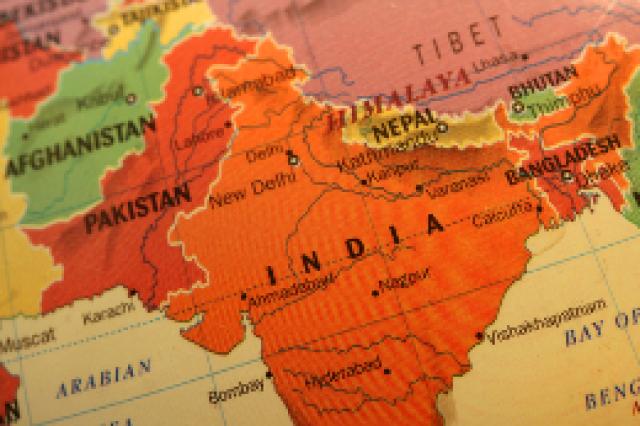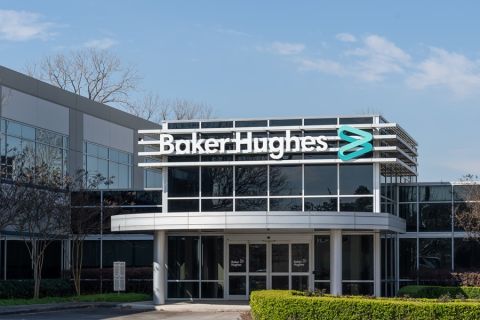
ONGC Videsh Ltd. (OVL) and Oil India Ltd. (OIL) have signed agreements to acquire a 10% interest in the gas-rich Area-1 block offshore Mozambique in a bid to secure gas for energy-starved India.
The deal was reached with Videocon Mauritius Energy Ltd. for about US $2.5 billion, OVL chairman Sudhir Vasudeva said after signing the agreements June 25.
The two Indian state-run companies would incorporate a new company, in which OVL and OIL would hold 60% and 40% stake respectively, to acquire the stake. The acquisition is subject to the approvals of the governments of Mozambique and India, relevant regulatory approvals, pre-emption rights, and other customary conditions.
The partners in Area 1 are operator Anadarko Petroleum (36.5% PI), ENH (15%), Mitsui & Co. (20%), Bharat Petroleum Corp. Ltd. (10%), and PTT Exploration and Production (8.5%). Thailand’s PTTEP acquired in 2012 an 8.5% stake from UK-based Cove Energy for $1.9 billion.
The equity acquisition, which is expected to be completed before year-end 2013, will increase the Indian companies' holding in Area-1 block to 20%. Bharat Petroleum currently owns 10%.
The block, spread over approximately 2.6 million acres in deepwater Rovuma basin, is considered to be one of the largest gas reserves in Africa, with estimated recoverable gas reserves of up to 65 Tcf. That is 10 times more than the reserve of India's largest gas discovery KG-D6.
So far, Anadarko Petroleum has discovered in Area 1 estimated recoverable gas reserves between 35 Tcf to 65 Tcf and original gas in place (OGIP) of close to 100 Tcf after drilling more than a dozen wells. Six of the discovery wells in the Prosperidade and Golfino/Atum complexes (Windjammer, Barquentine, Lagosta, Camarão, Golfhino, and Atum) were among the largest discoveries in Africa during 2010, 2011, and 2012. The company claims the Prosperidade complex holds 17 Tcf to 30 Tcf of estimated recoverable resources, while the Golfinho/Atum complex is estimated to hold between 15 Tcf and 35 Tcf of recoverable natural gas resources.
Anadarko and its partners are working to develop a gas liquefaction facility project with four trains of 5 million tons per year each. The company has an option to add six trains in the second phase onshore Mozambique to monetize the block’s large gas discoveries in the absence of a developed gas market in the East African nation. The commissioning of 10 LNG trains with total capacity of 50 million tons per year would make Mozambique one of the world’s largest liquid gas-producing hubs.
The Rovuma acquisition fits into OVL’s strategic plan due to the presence of large gas reserves and an opportunity to secure a large quantity of LNG. “Considering the growing importance of natural gas in the primary energy basket, this acquisition is a significant step by OVL/ONGC group towards the energy security of our country,” Vasudeva said.
The not-so-long distance between India’s west coast and Mozambique is another plus for the acquisition. The two countries are located on opposite sides of the Indian Ocean, and the distance between them is just more than 5,000 km (3,107 miles). This means India could import LNG from Mozambique at lower shipping costs than from Australia, Nigeria, and the US.
ONGS plans LNG imports
OVL’s parent company, ONGC Ltd., already has initiated a plan to develop an LNG import terminal with a capacity of 5 million tons per year at the Mangalore port on India’s west coast in a joint venture (JV) with Mitsui & Co. and Bharat Petroleum, partners in the Rovuma asset. The three companies recently signed a memorandum of understanding (MOU) with New Mangalore Port Trust to develop a LNG import and regasification terminal with capacity of 5 million tons per year in the outer harbor of the Mangalore Port.
“The coastal location of Mangalore has a strategic advantage of [a] readily available all-season operating port with favorable marine conditions and proximity to existing and upcoming global supply sources of LNG,” ONGC said.
Hopes are to commission the LNG terminal at Mangalore by 2018. Mangalore is an ideal location for the terminal considering it has pipeline access to major gas-consuming centers. Gas demand is growing in south and southwest India. In addition, ONGC is developing a special economic zone with production facilities for fuels, olefins, and aromatics at Mangalore, along with its existing 10.5 million tons a year refinery and associated petrochemical plants.
Mangalore Refinery and Petrochemicals Ltd., an ONGC subsidiary, needs about 2.6 MMscm/d of gas alone to operate its 10.5 million tons per year refinery and petrochemical plants at Mangalore Port. The demand for regasified LNG in Managalore region is estimated to be between 6 MMscm/d and 8 MMscm/d.
ONGC is increasingly looking at LNG capacity as India’s dependence on gas imports continues to rise. Demand is expected to reach 15 million tons by 2013, up from 11 million tons two years ago.
Gas imports are crucial
Demand for gas in India continues to outstrip supply in the absence of major gas discoveries and trans-national gas pipelines. Gas supplies, according to the country’s Planning Commission, totaled 143.22 MMscm/d in the fiscal year 2012-13. The demand at that time was 286 MMscm/d. The commission estimates the demand for gas is expected to reach 466 MMscm/d by March 2017, with a supply estimated at 231.74 MMscm/d.
The gas shortage in the country is estimated to be around 232 MMscm/d by March 2017, which needs to be bridged through LNG imports. Petroleum and natural gas minister Veerappa Moily said efforts are underway to increase LNG regasification in the country by more than 50 million tons per annum by fiscal 2016-17, with a supply capacity of 198 MMscm/d.
“India already has secured supply deals of around 14 million tonnes per annum [of LNG] and around 20 million tonnes [of] deals are in the pipeline,” Moily said.
Currently, India has two LNG import terminals – a 10 million tonne terminal at Dahej and a 3.6 million tonne plant at Hazira in Gujarat. Petronet LNG Ltd. and GAIL (India) Ltd. are developing LNG import terminals, each with a 5 million tonne capacity, at Kochi and Dabhol, respectively, on the west coast.
India has no option but to import gas to meet the growing demand. Huge gas fields like Rovuma provide a gas source.
Recommended Reading
Baker Hughes Tapped for NatGas, Hydrogen Technology
2024-04-03 - Baker Hughes will provide three of its NovaLT 12 gas turbine driven compressor trains for a new gas compressor station in Sulmona, Italy.

